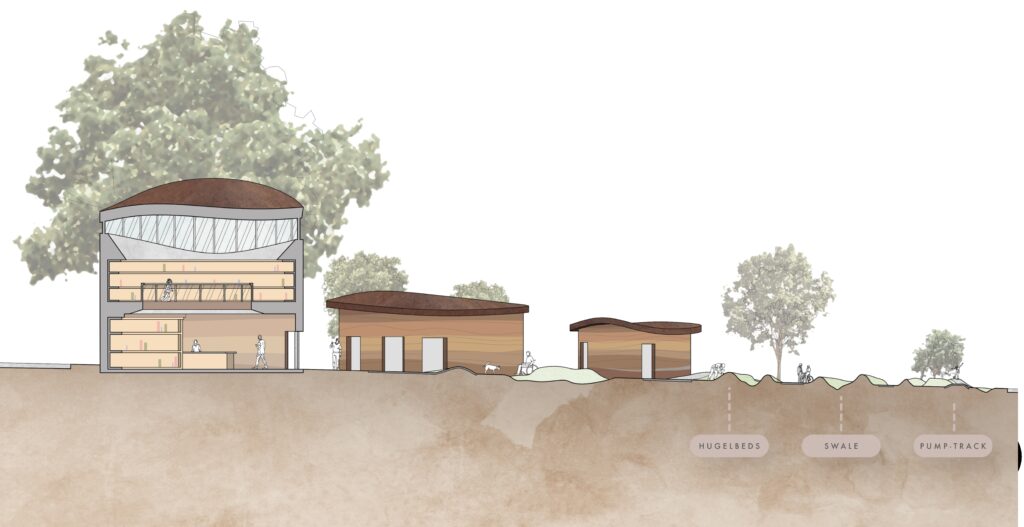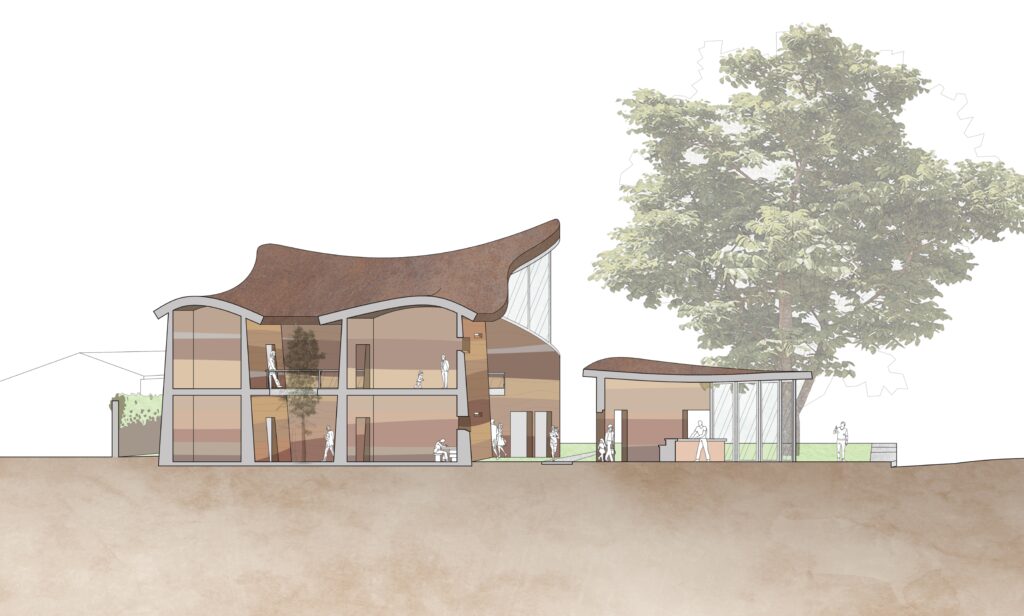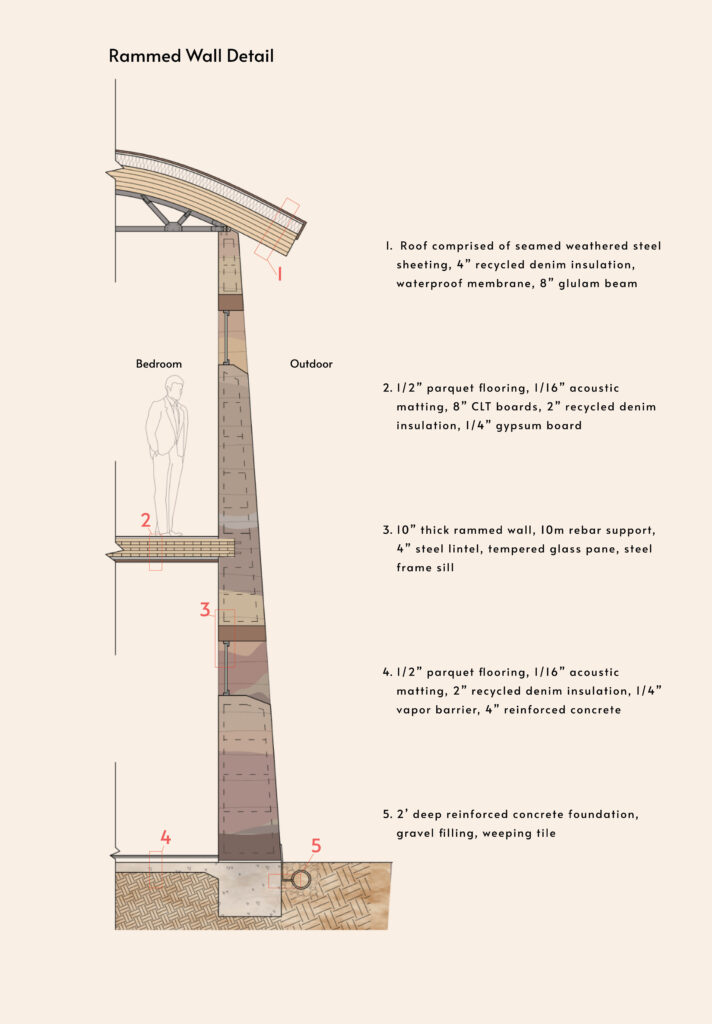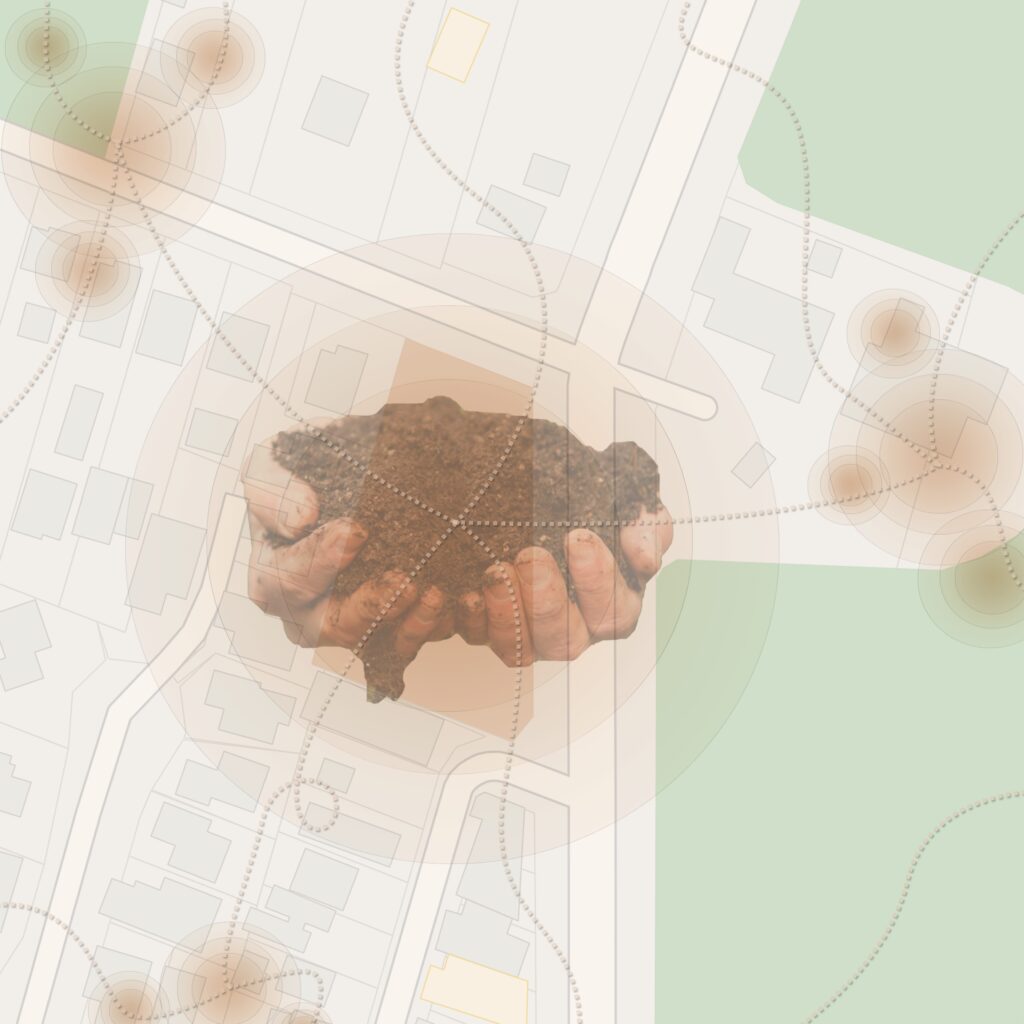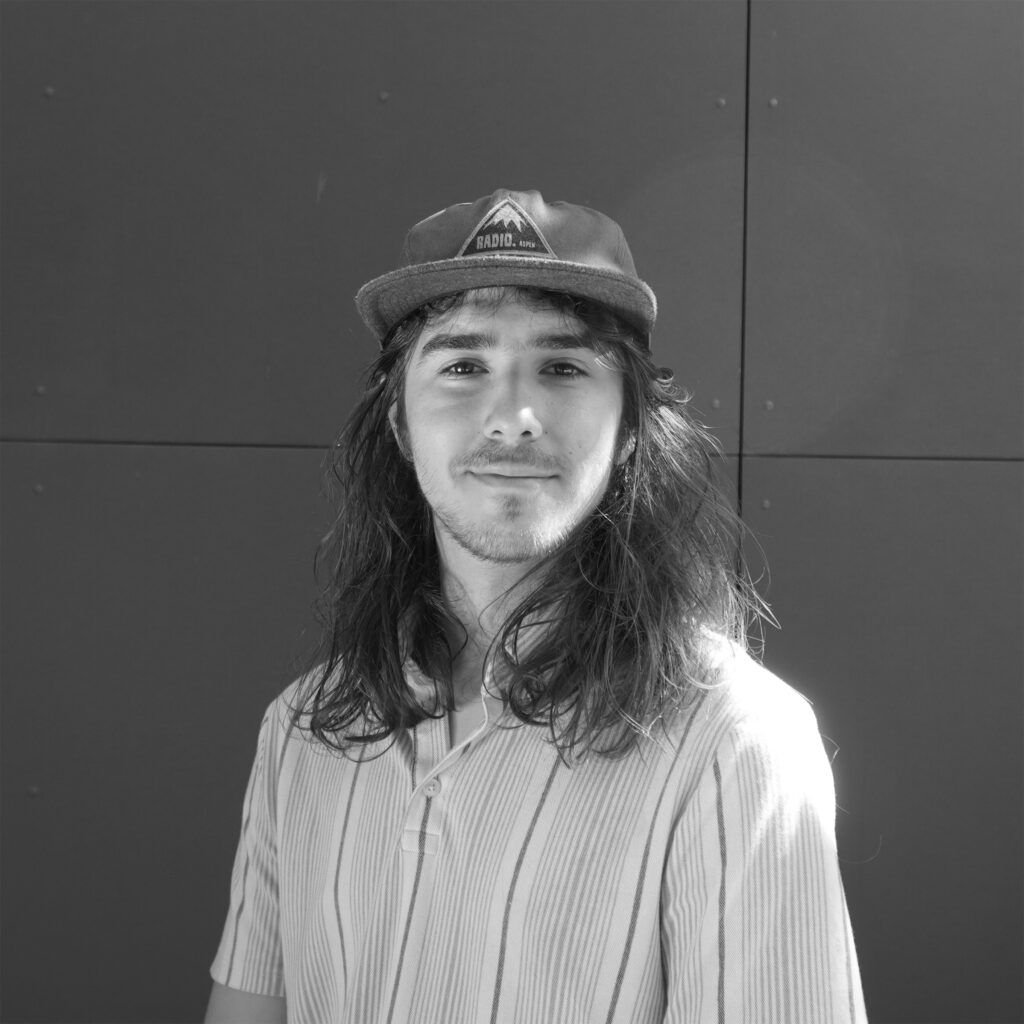
Kasey Dubner
Pasadena City College
Gregory Zamora & Deborah Bird
‘Regenerative Recomp.’ represents compost as the foundation for both healthy food and a healthy future. The process by which something is transformed through decomposition, into nourishment for future generations. By layering material, allowing for breathability, exposure to sunlight, and given time, what would have been waste to the landfill, is regenerated as life throughout the neighborhood and community. Through the functions and forms of natural recomposition, integrates a program that not only takes the organic waste of the community, but gives back both fresh soil and knowledge, educating and rejuvenating the neighborhood at the same time.
Regenerative Recomposition
A neighborhood is simply a local-community, sharing local resources and tools. The project specifically connects and empowers the locals to not only one another, but the act of reuse. Sustainably growing and further developing the neighborhood–and its community as a whole. Addressing and solving not only the access to fresh grown produce in what is statistically considered a ‘food desert’, but to make an impact in the homes and properties of anyone and everyone in the neighborhood/community, through a means of composting. ‘Regenerative Recomposition’ represents compost as the foundation for both healthy food and a healthy future. The process by which something is transformed through decomposition, into nourishment for future generations. By layeringmaterial, allowing for breathability, exposure to sunlight, and given time, what would have been waste to the landfill, can be regenerated as life throughout the neighborhood and community. Through regenerative and layered materiality/structure such as Glulam beams, decomposed granite paths, and Rammed earth walls(symbolizing layers over time), as well as Swales and Hugelkultur beds, to represent the organic/non-linear flow consistent with that of compost. By allowing the farm to be most exposed to sunlight, and dividing the major program to allow for the breathability of circulation and airflow. A ‘pump track’–consistent with the form of the rest of the design–flows throughout the site, allowing for not only unique transitions from program to program, but engagement from youth of all ages.
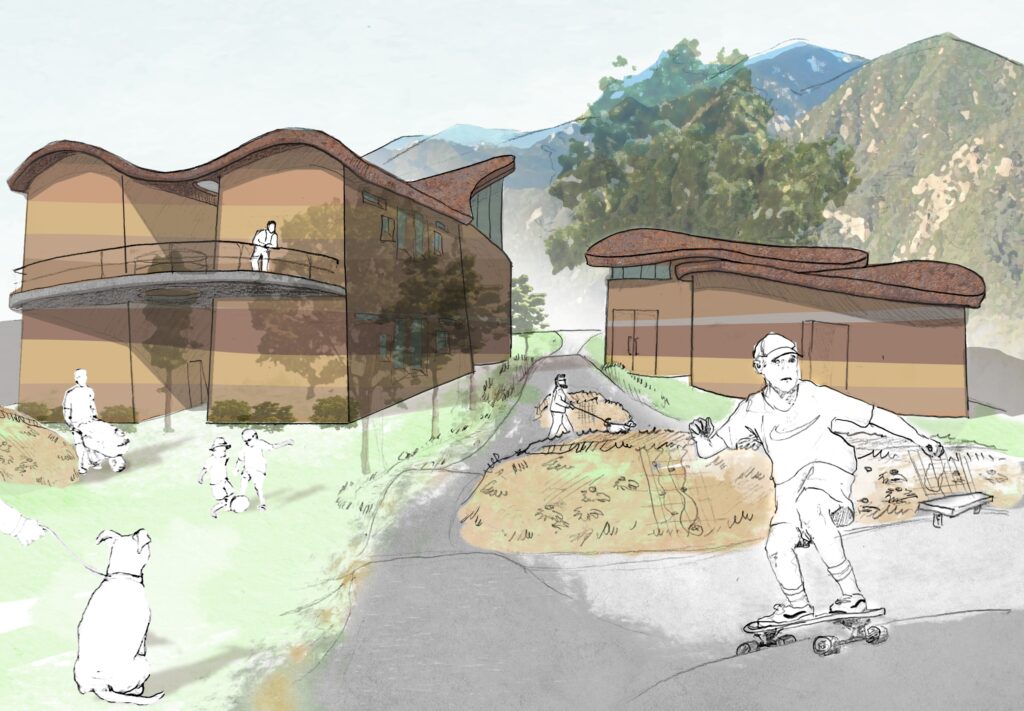
The design utilizes rain/graywater collection to feed swales, which work hand-in-hand with planted trees to reach ground water as well as feed the hugel beds within the farm. Hugelkultur–a permacultural approach to composting–, buries salvaged logs within a mound of layered organic material, allowing for vertical gardening over a long period(decomposition of the logs provides nutrients over time). The pump track, which connects the hugel beds to the swales, introduces a means of biking/skating that had not existed in the Altadena neighborhood previously, as well as connects programs to one another.
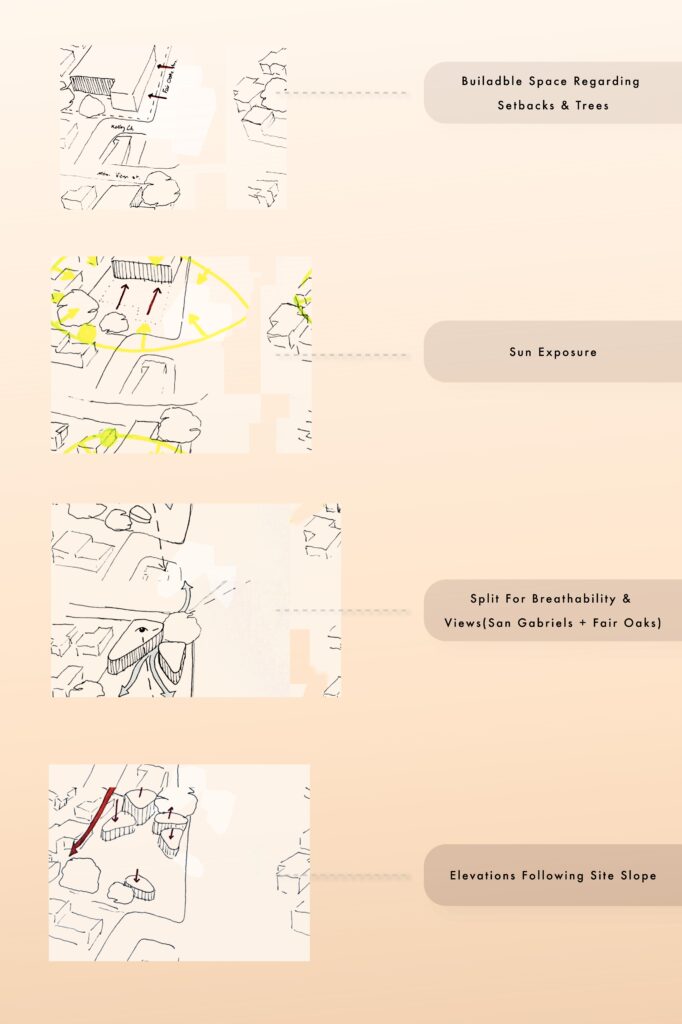
The ideal visitor of the site would be those in the direct neighborhood, and those coming from the bus stop placed on site. Considering those traveling by bus, a designated inlet and area with immediate access to the farm, kitchen, and restrooms. Housing is situated with access to each program as well as views to the San Gabriel mountains and down Fair Oaks ave. Within the housing area, is an atrium allowing sunlight onto trees, with a cross-breeze air circulation.
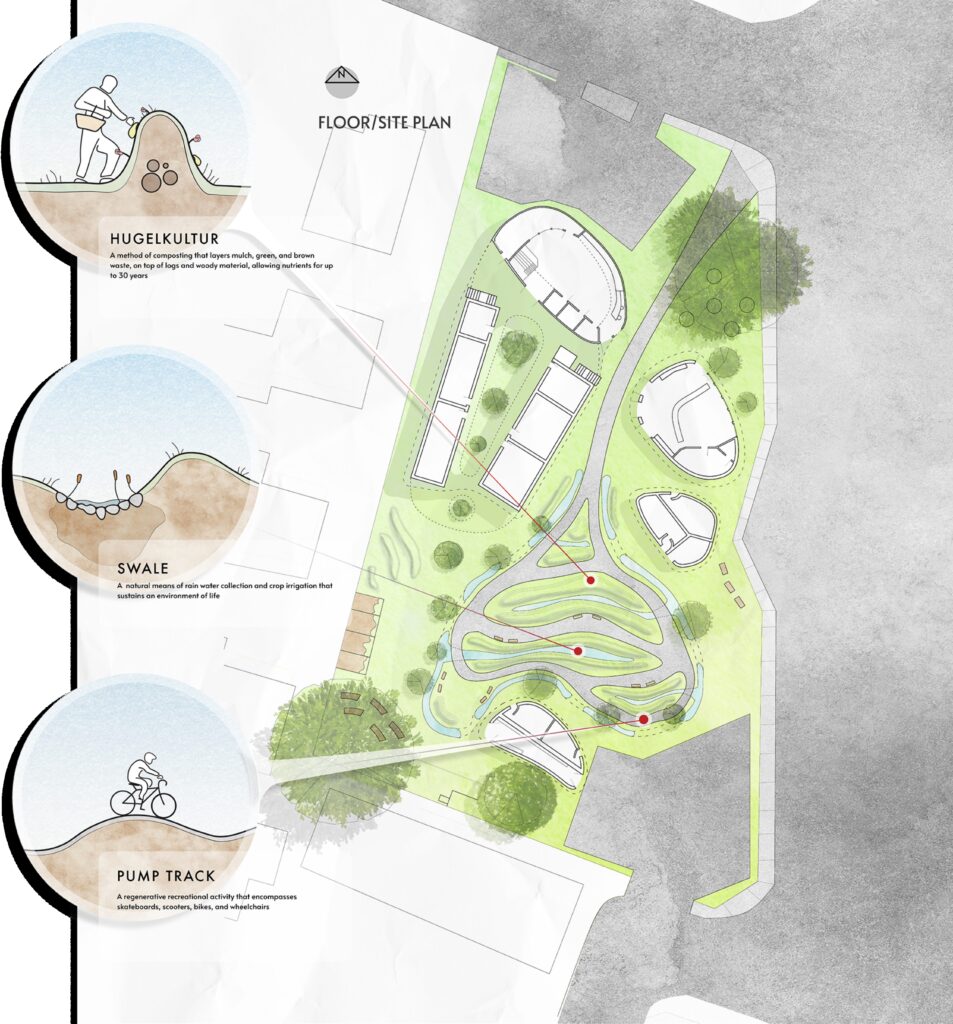
In order for the project to function, it works specifically with local residences and commercial buildings in a means of trade. All food, green, and brown waste/scraps that would otherwise end up in a landfill, can be diverted to this site, fed into the hugel farms and compost heaps, and return the locals with fresh compost(excluding cow manure, so it doesn’t smell how one may expect) that can be used to enrich the life and biodiversity of each property in the area. Over time, the compost becomes richer, and the soil and macro life expand throughout the neighborhood, regenerating the community. As a means of educating/informing the public on a matter that surprisingly most people can easily address in their own residencies, and to regenerate the waste that is already there, into what could be a more thriving soil life in each neighborhood. Where there is healthy soil, there are healthy plants. With healthy plants–and more plants for that matter–, are healthy people.

The project simply aims to provide the community/neighborhood with gardening and soil education, a place to eat and purchase foods, and perhaps most importantly; a place to live. All of which are crucial to a thriving neighborhood, and can be improved over time, just as compost can be.
